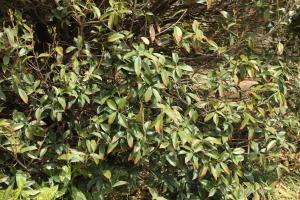1、 Ramet
Because it grows in groups, it will often change pots. Then it can also be carried out together with ramets when changing pots. You can also choose to dig the young plants next to the mother plant in the growing season. There is no requirement on how to dig them, because the young plants dug down can survive regardless of whether they have roots or not. Seedlings with roots can be planted directly. Young plants without roots should be dried for about one or two days before planting. It should be noted that the newly planted young plant should not be watered too much, otherwise it will rot. it should wait for it to grow for a period of time, and then carry out normal maintenance after growing new roots

2、 Leaf insert
When inserting leaves, the fleshy leaves to be selected should be relatively robust, and then the fleshy leaves should be directly inserted into the matrix with good drainage effect like coarse sand, and then the basin soil should be kept moist. After the buds grow, wait a few days to make the buds grow a little bigger, about two or three centimeters, you can remove them, or you can plant them after drying the wounds for two or three days

3、 Cutting
For those who are not easy to sprout, this method can be adopted for reproduction. Artificially destroy its central growth point, which can promote its sprouting. When its sprouts grow to two to three centimeters, it can be removed and placed for a few days. After it is dry, it can be cutted in the culture soil. Pay attention to that the soil can not be too wet and keep it semi dry. New roots will grow in two or three weeks

4、 Sow
This method is also the most traditional method, which must be through artificial pollination. Sowing is generally carried out in the morning when it blooms and the weather is very good. First, two Yulu plants that bloom at the same time should be selected. The requirement for parents is to select relatively compact plant shape, high transparency and full leaves, and then pollinate

 how many times do yo...
how many times do yo... how many planted tre...
how many planted tre... how many pine trees ...
how many pine trees ... how many pecan trees...
how many pecan trees... how many plants comp...
how many plants comp... how many plants can ...
how many plants can ... how many plants and ...
how many plants and ... how many pepper plan...
how many pepper plan...































